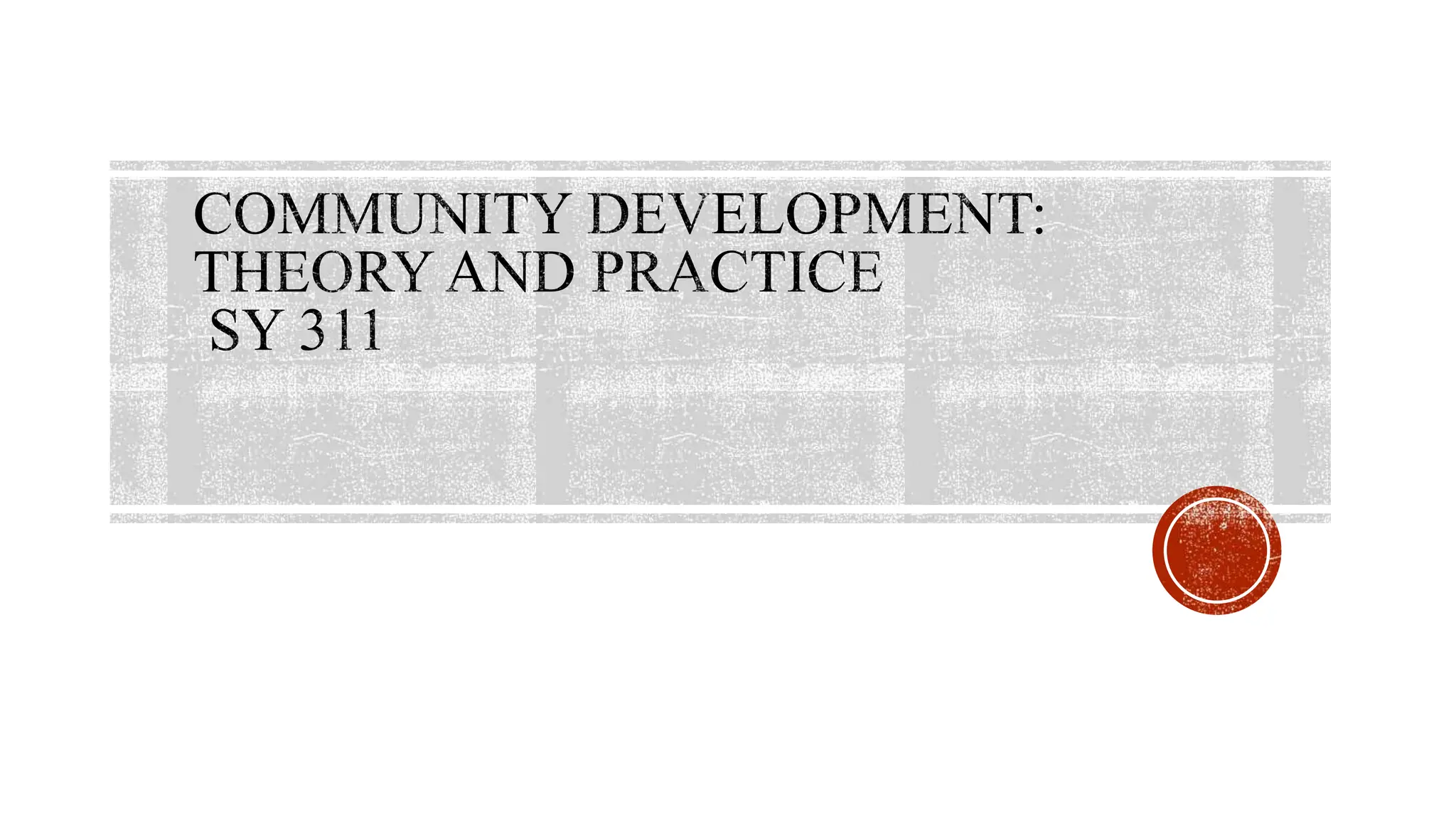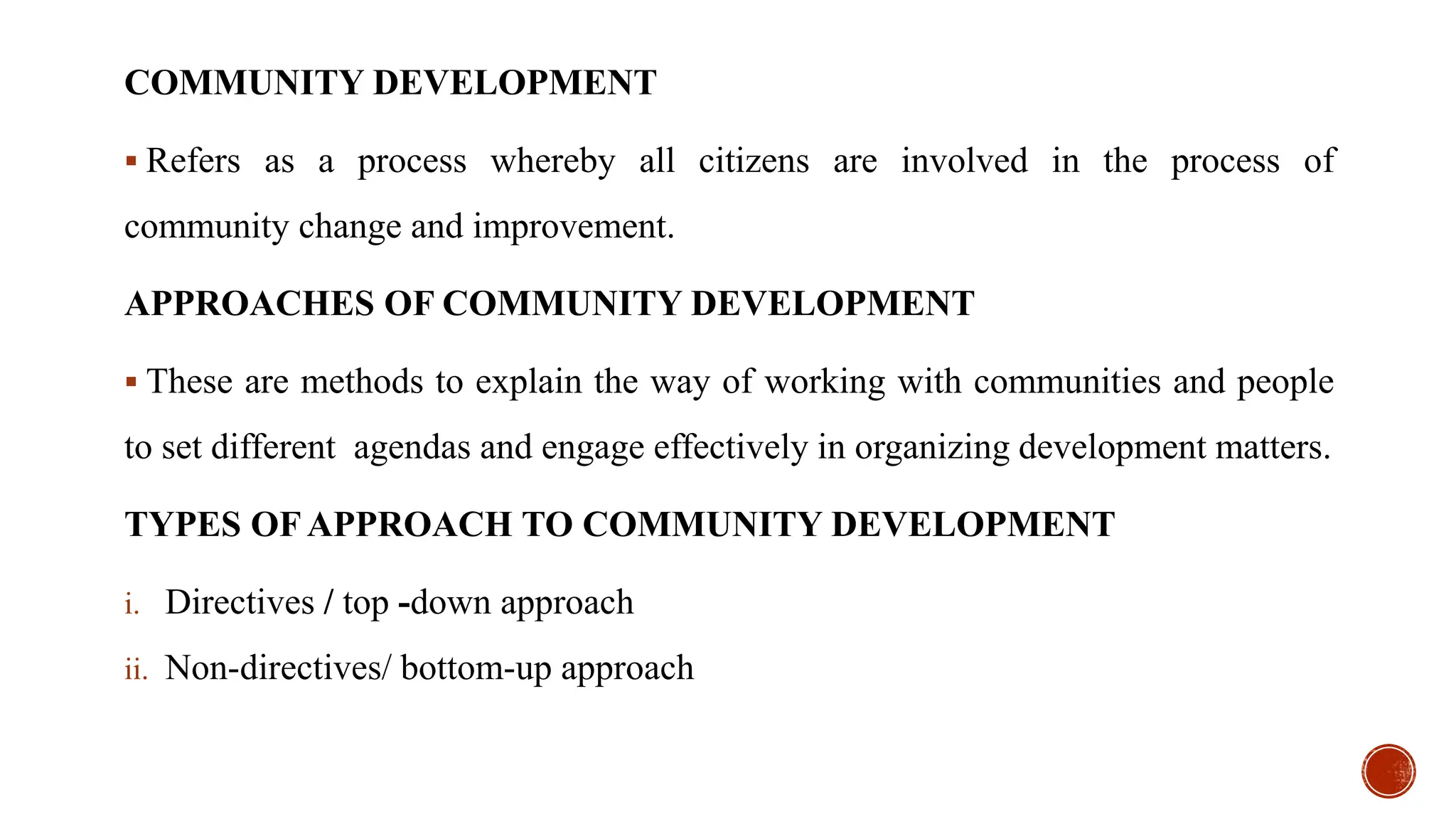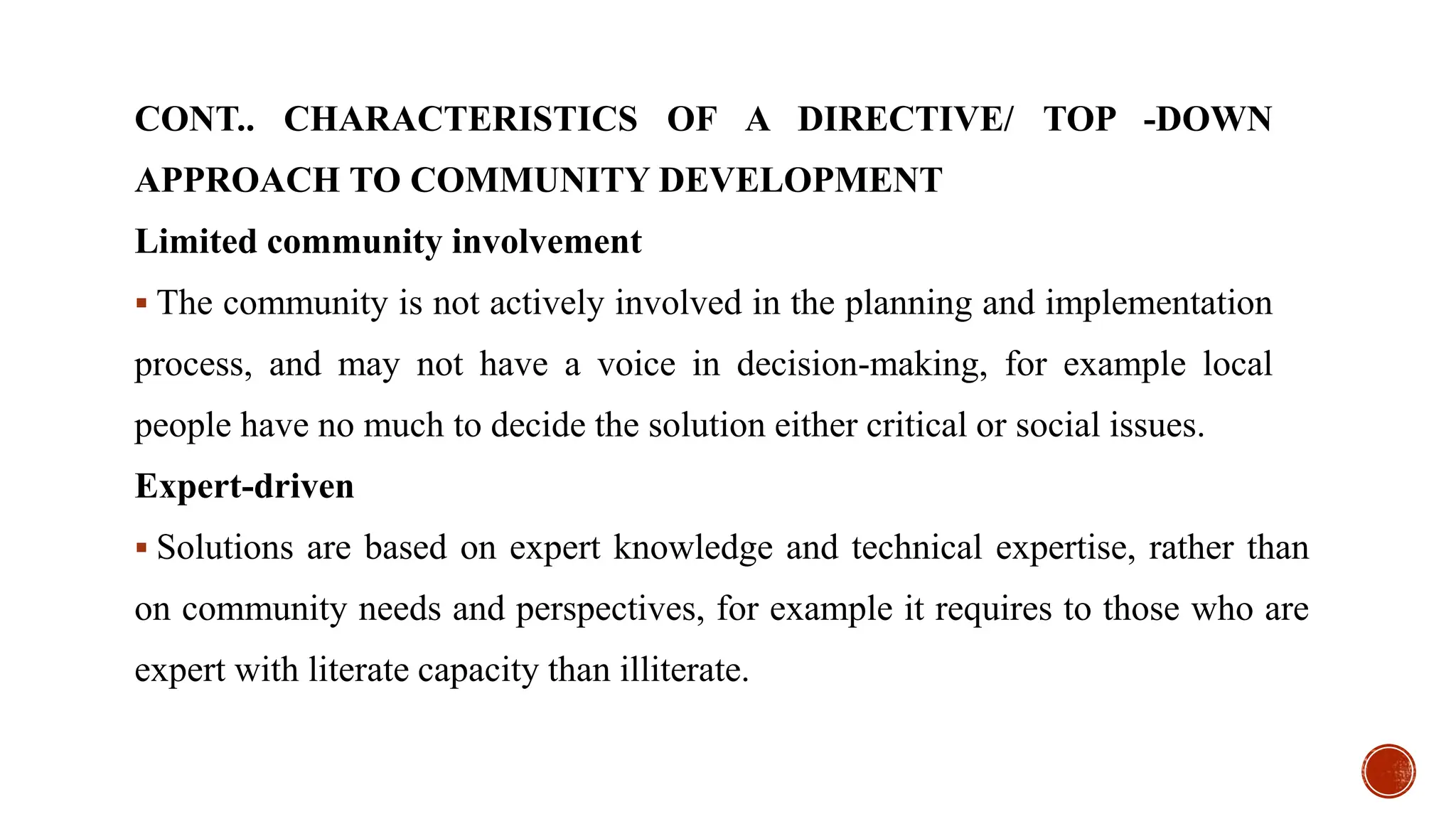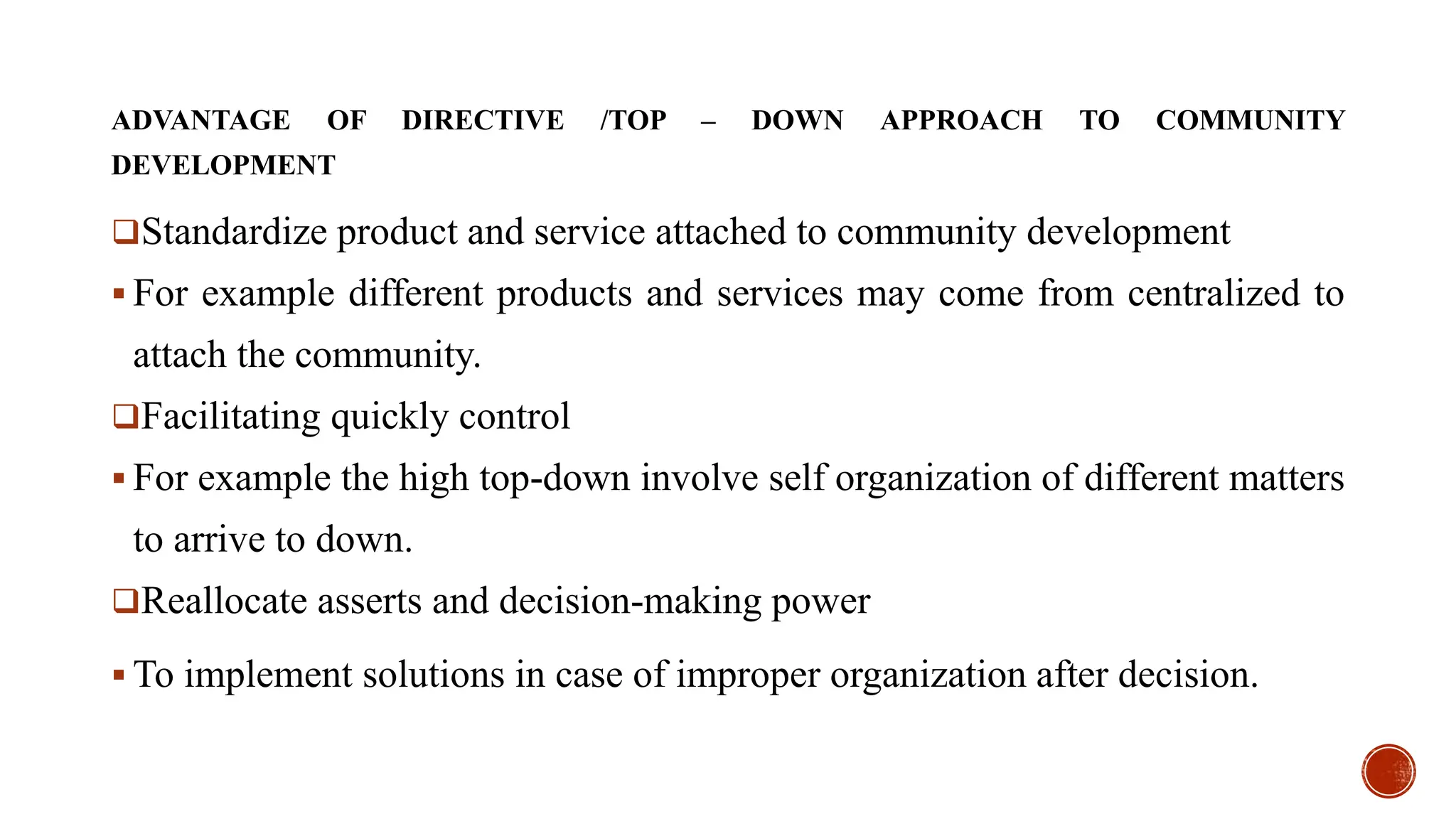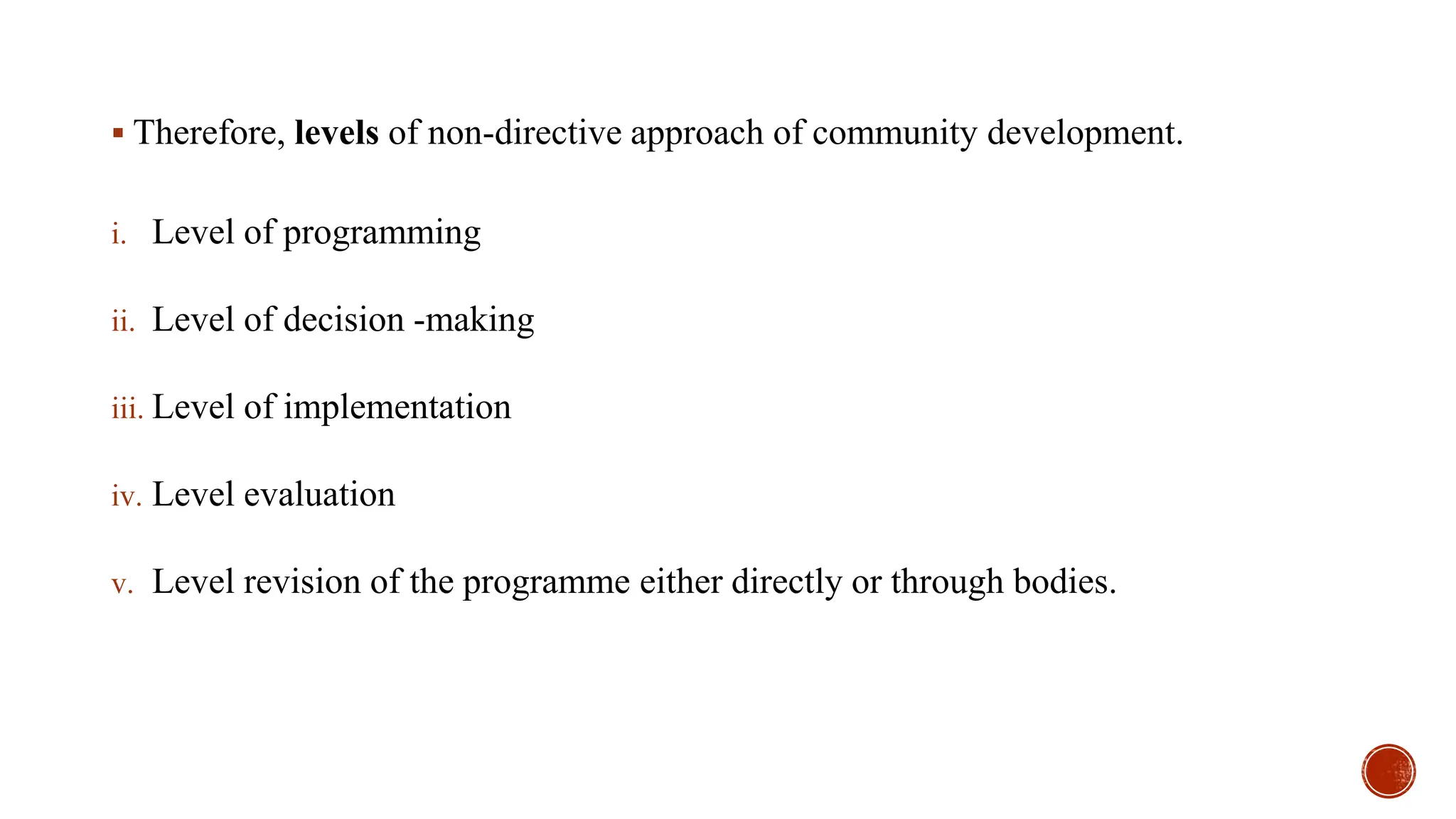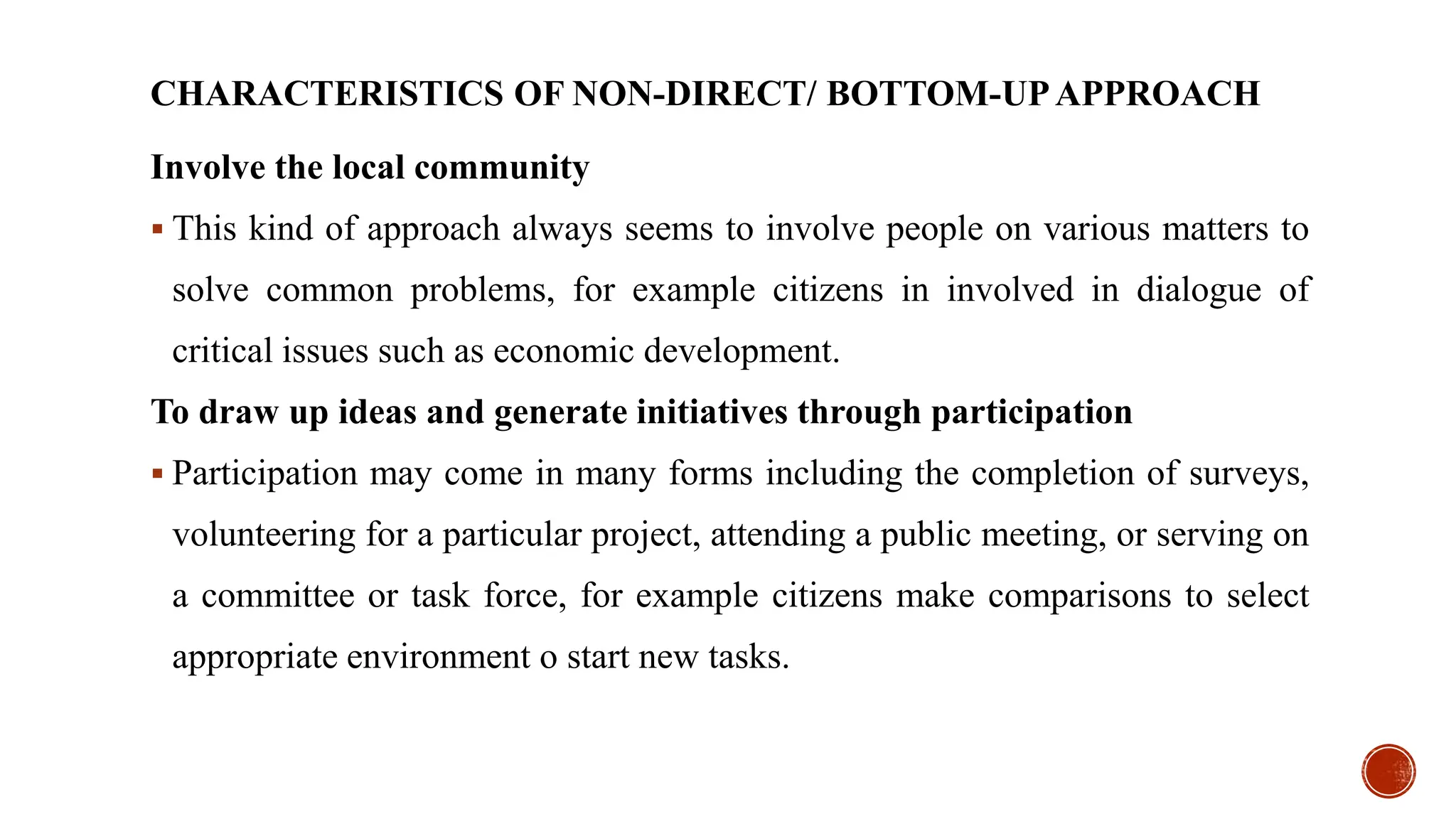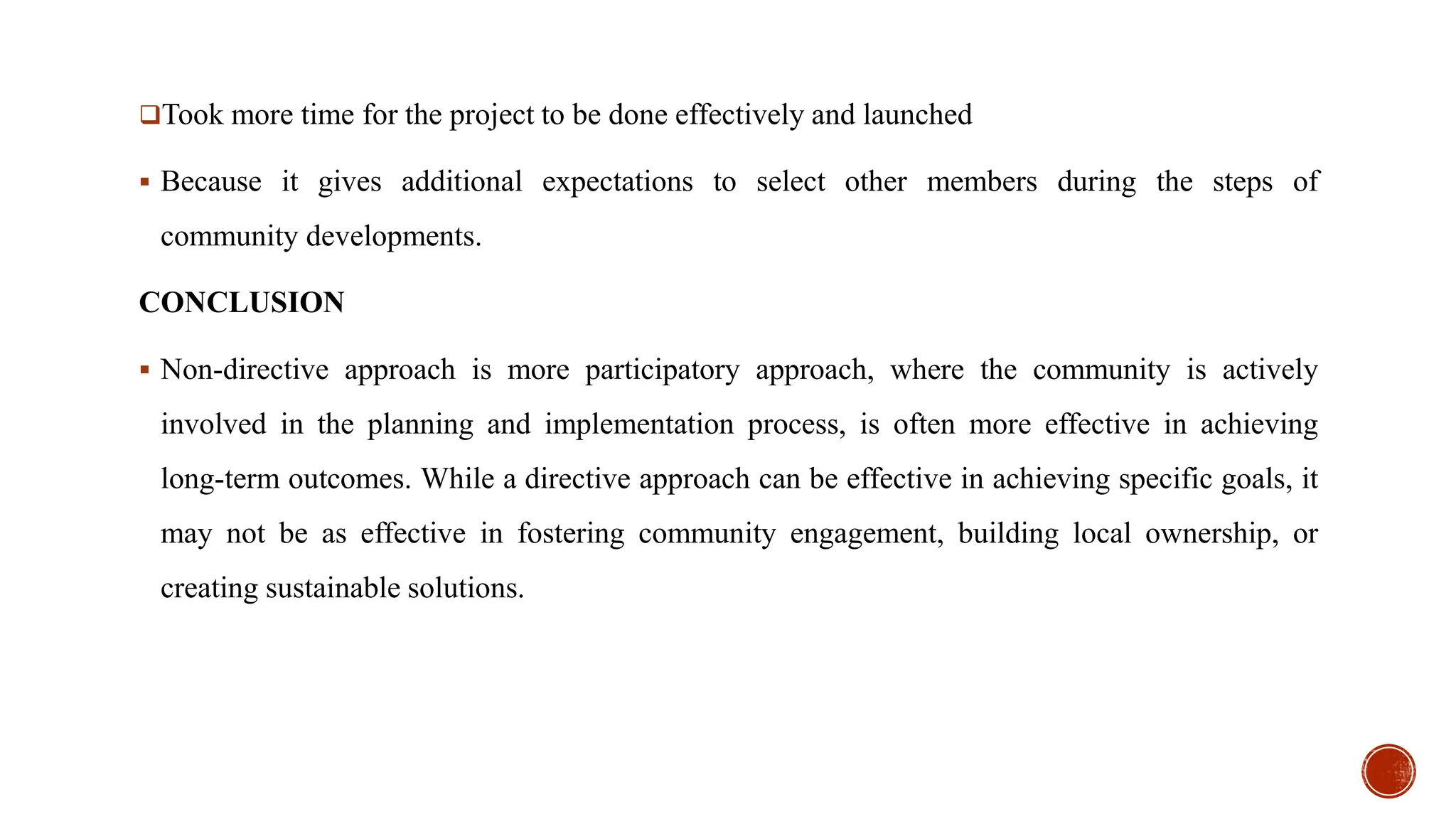This document discusses two approaches to community development - directive/top-down and non-directive/bottom-up. The directive approach involves centralized decision making by authorities with limited community involvement, while the non-directive approach actively involves community participation in planning, decision making, implementation and evaluation. Both approaches have advantages like quick results for directive and sense of ownership for non-directive, and disadvantages such as lack of sustainability for directive and potential for conflicts for non-directive. The conclusion is that the non-directive approach tends to be more effective for long-term outcomes by fostering engagement and local solutions.
